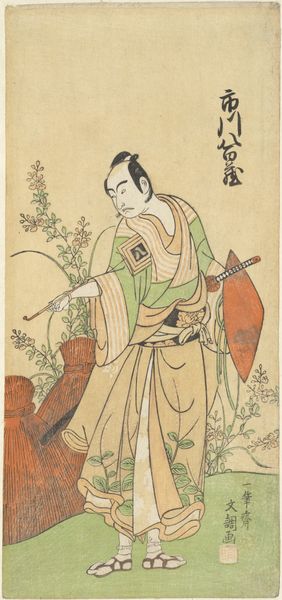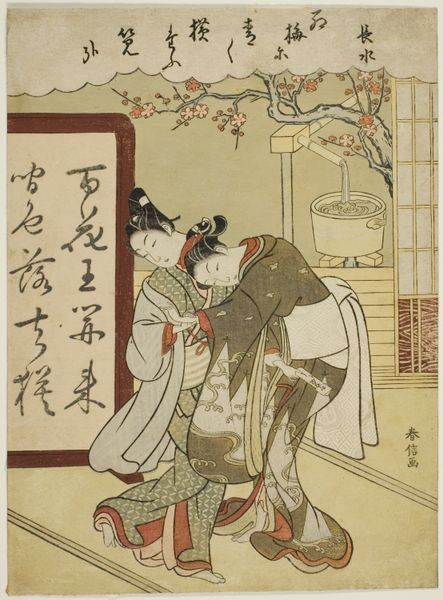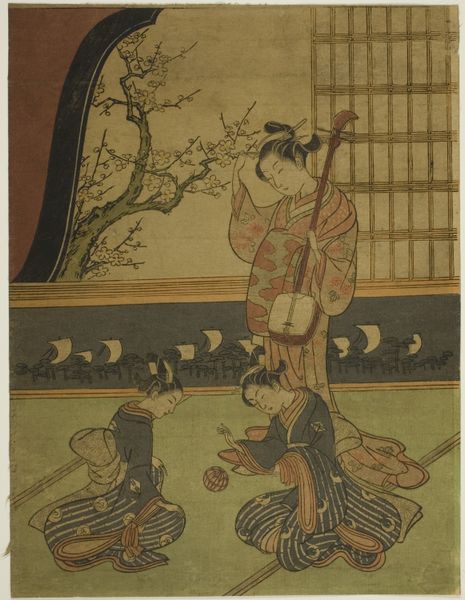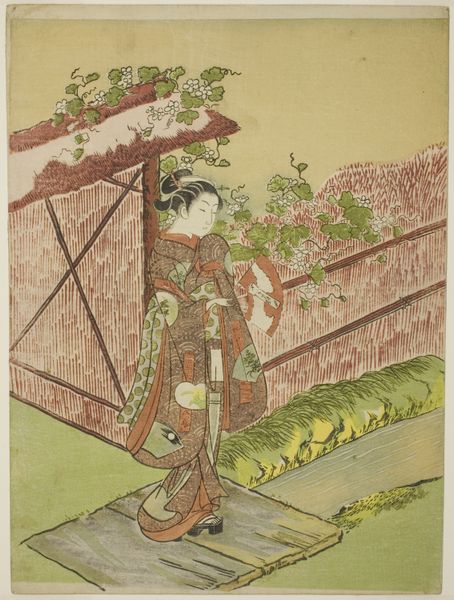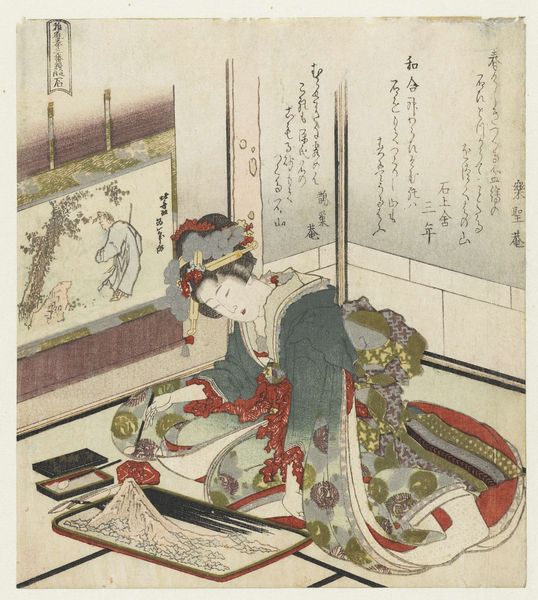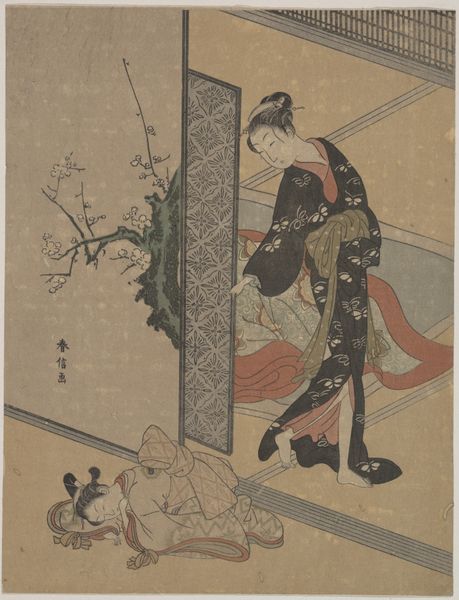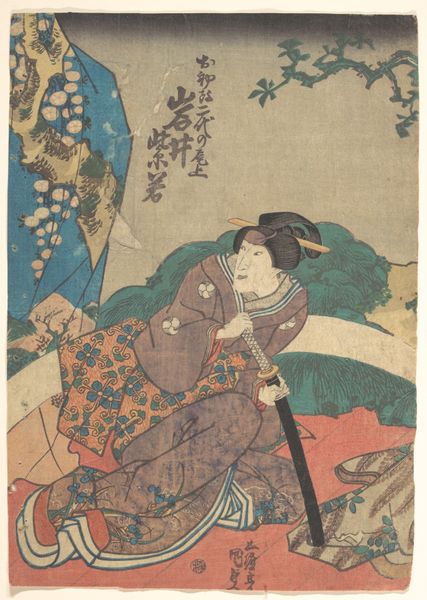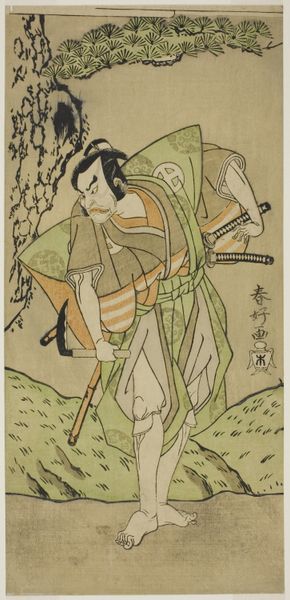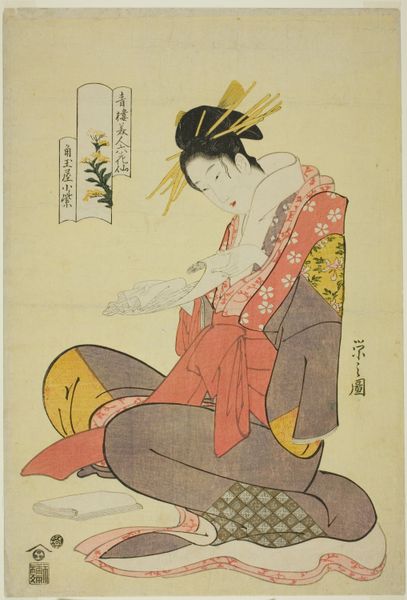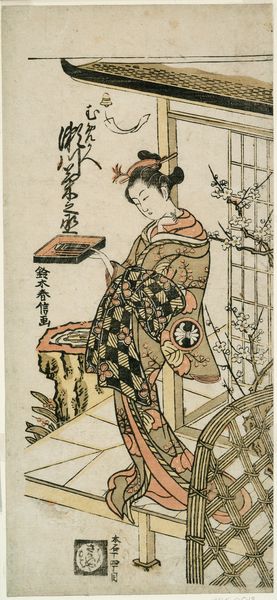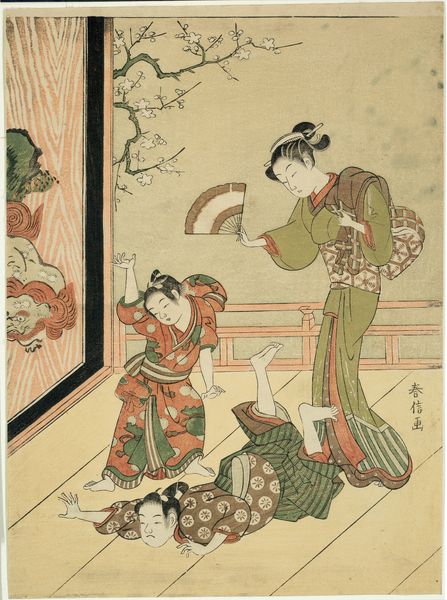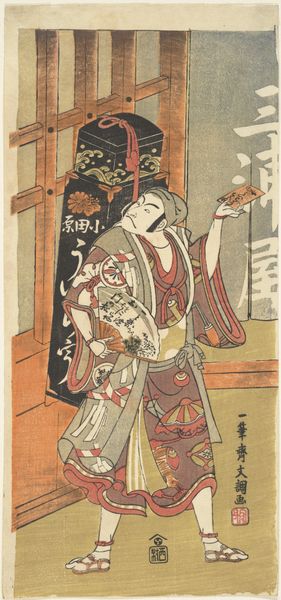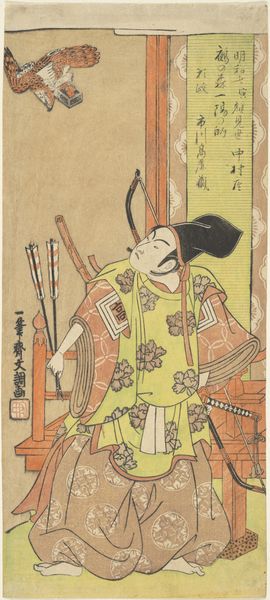
Visual Parody of the Noh Play -Hachi no ki- 1765 - 1766
0:00
0:00
print, ink
#
water colours
# print
#
landscape
#
ukiyo-e
#
japan
#
figuration
#
ink
#
genre-painting
Dimensions: 10 5/8 × 8 7/8 in. (27 × 22.6 cm) (image, sheet, vertical chūban)
Copyright: Public Domain
Curator: Look at the delicate linework in this print, titled "Visual Parody of the Noh Play -Hachi no ki-", created by Suzuki Harunobu around 1765 or 1766. The piece is a stunning example of Ukiyo-e. Editor: It feels almost hushed, doesn’t it? The subdued color palette and the heavy presence of snow give a sense of stillness and contemplative melancholy. Curator: The composition is remarkable. Note how the artist has structured the pictorial space by creating a distinct contrast between geometric and organic shapes, from the square door frame to the curved branches and the woman’s carefully positioned form. Editor: And it seems the artist is drawing on an older tale, yes? "Hachi no Ki" is a story about a poor samurai who burns his beloved bonsai trees to keep a traveling lord warm in a snowstorm. The woman here appears to be tending to the potted plants; the image seems to hint at a specific moment, fraught with the tension between hardship and hospitality. Curator: Precisely. Harunobu, working with ink and watercolors on paper, employs sophisticated layering of colors to achieve subtle modulations and textural depth, particularly visible in the snow-covered branches. The surface modulation functions to evoke a sense of dimensionality and tactility. Editor: Beyond the technical brilliance, I find a potent mix of cultural anxieties and values: self-sacrifice, honor, and an almost painful sense of aesthetic beauty in a harsh world. The covered bonsai serve as symbols of resilience and a poignant reminder of life’s fleeting beauty even in the face of winter's harshness. Curator: Indeed, Harunobu’s play with negative space, particularly in the vast expanse of the snow-laden landscape, reinforces a kind of elegant minimalism. It mirrors the core philosophy of Ukiyo-e, revealing beauty in the everyday, despite prevailing societal or environmental challenges. Editor: The imagery and use of traditional narrative touchstones really underscores how even seemingly simple genre scenes can serve as potent vessels for exploring cultural memory and collective emotions. I come away feeling like I have just witnessed something deeply precious and meaningful. Curator: It is a testament to how thoughtful formal construction can amplify underlying themes, inviting layered interpretations from one era to the next.
Comments
No comments
Be the first to comment and join the conversation on the ultimate creative platform.

